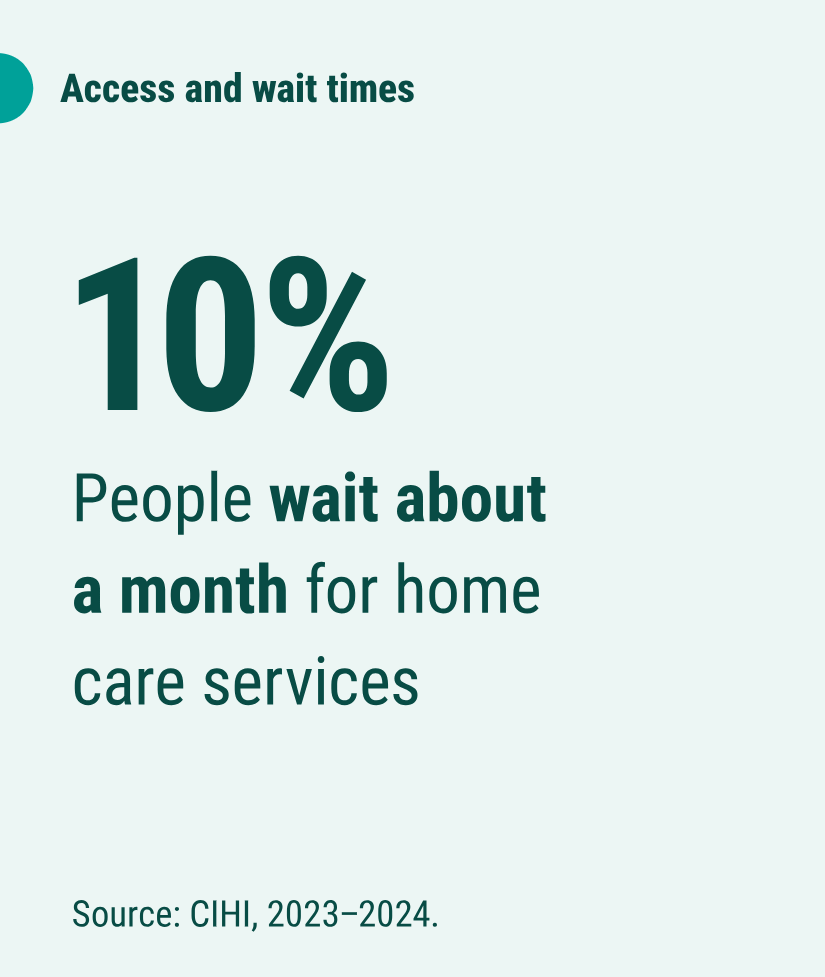
Full Service Physiotherapy Benefits
How convenience, continuity of communication, and objective measurement remove common tradeoffs in home care, big clinics, and virtual‑only programs.
Why access, tools, and communication change outcomes
Summit’s model focuses on three practical pillars that matter most to clients: fast, punctual access that removes travel and lobby time; portable clinic‑grade tools and repeatable measures that let us prove progress; and direct clinician communication with timely follow‑ups so nothing falls through the cracks.
The Three Pillars
-

Pillar 1 — Access & Convenience
Problem we solve: Long waits, lobby time, and inconvenient clinic hours add friction and delay care.
What we offer: Short clinician‑scheduled bookings with punctual windows; optional Early AM / Late PM slots; travel windows (reserved half‑day/full‑day) when needed so you get concentrated, timely care.
Why it matters: Faster assessment and fewer wasted trips mean quicker decisions and earlier progress.
See how on‑demand scheduling looks in practice here
-

Pillar 2 — Technology & Objective Measurement
Problem we solve: Generic or inconsistent measurement hides real change and forces guesswork.
What we offer: Portable clinic‑grade devices and routine repeatable measures (ROM, functional tests, baseline tracking, objective strength/force where relevant) used every assessment.
Why it matters: Objective data removes ambiguity, focuses treatment, and lets us show measurable progress so decisions (progressions, load changes, return‑to‑play) are evidence‑based.
View sample measurement outputs and what they mean here
-

Communication (follow‑ups and clinician continuity)
Problem we solve: Poor follow‑up and admin handoffs create confusion and slow momentum.
What we offer: Direct clinician communication, proactive between‑visit check‑ins, and a continuity‑first workflow where one clinician manages your plan and its evolution.
Why it matters: Clear, timely touchpoints reduce misinterpretation, improve adherence, and cut unnecessary repeat visits.
Read short vignettes that show the difference here
Access and Convenience
Sample Mini case
A mid‑career manager with escalating shoulder pain faced two‑week waits at local clinics and a full day lost per appointment needing to take the day off work to finally get an appointment. After a single Discovery Call we scheduled a reserved half‑day travel window; completed a hands‑on assessment with relevant objective metrics captured, and filmed Rehab Blueprints on site. The client avoided the hassle of coordinating multiple future clinic trips, started progressions the same day, and reported meaningful function gains in two weeks instead of the typical month‑plus trajectory.
Problem:
Many clients hit the same pattern as the case above: referral queues, block scheduling, and clinic‑centred hours force extra travel, lost work time, and delayed intervention. Those delays compound — a short‑lived flare left unassessed can become a compensatory movement pattern or symptom escalation that requires more visits to correct
Provincial data confirm the delays many clients face — here’s how long people typically wait for first home‑care services.
Why it matters
Longer waits and constrained access increase total recovery time and the risk of avoidable complications; provincial data show measurable median wait times for first home‑care services across jurisdictions, illustrating that access delays are a systematic problem for many patients. Private clinics still have wait times, and even with evening offerings, you may not be able to book a session time you’d like. This is a sub-optimal solution for those with long work hours, business travel schedules, and those looking for the convenience of choosing an appointment when THEY would like, instead of the frustration of what the clinic has available.
How Summit solves it
collaboratively scheduled, punctual windows that minimize lost time for clients seeking the ultimate in zero compromise convenience.
Optional Early AM / Late PM or on demand session slots so appointments fit even the busiest of schedules.
Travel service with reserved half‑day/full‑day windows to deliver concentrated, uninterrupted on‑site care.
Discovery Call triage that confirms travel eligibility and immediate needs before booking.
Session estimator visibility showing available time windows and any travel upcharge so clients choose the right booking up front.
Outcome for clients
Faster assessment → immediate, measurable plan → same‑day Rehab Blueprints and progressions. Clients keep momentum, reduce wasted trips, and often achieve earlier functional gains because the gap between problem identification and treatment is small.
See how on‑demand scheduling works and view typical travel windows here
Technology and Objective Measurement
Sample Mini case
A weekend runner with a sprained ankle left a clinic with a templated “rehab exercise” list on a PDF. She forgot the cues her physio gave her and she ended up losing the paper; her rehab progress stalled. She then tried a different clinic that supplied stock exercise videos through platforms, but the extra logins, generic exercise demos, and need to interpret the typed instructions her physio painstakingly annotated under the videos led to confusion, a feeling of “standardization” to her rehab plan and caused apprehension and issues with adherence. After a physio assessment with Summit, we filmed rehab exercise‑specific clips, issued a secure Rehab Card that tapped to her phone to open only her videos, and paired the card with a simple hop test neither of her prior physios performed with her. Within two weeks she regained confidence and resumed trail running pain‑free.
Problem:
Many clinics hand out paper home exercise programs (HEPs), PDFs, or portal logins that require extra steps, passwords, or guesswork, then ask their patient to follow stock video footage of a “rehab exercise” with a series of annotations or notes from the physio on what to adjust or how to perform the movement, catered for their rehab specifically. Other clinics rely on verbal instructions and expect clients to “remember” exact form and progression. That friction — unclear cues, frictional access, mixed media — reduces recall, lowers adherence, and increases repeat visits to correct errors.
Why it matters
Clear, easy access to clinician‑specific media plus objective benchmarks speeds correct execution and progression; validated portable devices reliably detect deficits (example) which makes within‑patient tracking clinically useful. Using secure, tap‑to‑open rehab cards removes HEP portal/app friction and keeps a single, clinician‑issued asset tied to the patient for accessing those videos safely.
How Summit solves it
Clinician‑filmed clips: 3–6 short videos showing the exact modifications, tempo, and cues used in the session for ALL our physio clients.
Secure Rehab Card (Hotel Card): an NFC tap card given in person at assessment; tapping it opens a unique, blockchain‑secured weblink that only the cardholder can access, preventing link sharing and preserving privacy.
Measurement pairing: simple field tests (hop tests, balance, grip where relevant) recorded on the same visit and linked to progression rules rather than vague timing-based advice. Results are shared with our clients so they know when they are progressing and watch their progress in real time.
Outcome for clients
Removing login and interpretation friction increases adherence and rates of correct exercise execution; secure, clinician‑specific videos plus objective benchmarks let clients progress confidently and reduce unnecessary repeat visits. Clinicians spend less time re‑explaining and more time refining exercise parameters based on measurable change.
See how an NFC Rehab Card works in practice here
Communication, Follow‑ups, and Continuity
Sample Mini case
At a busy outpatient clinic a triathlete’s care involved a physiotherapist, a physiotherapy assistant (PTA), and front‑desk scheduling. The physio instructed the PTA to run exercises X, Y, and Z with prescriptions A, B, and C. Miscommunications followed at every hand‑off: the PTA misunderstood one load cue, relayed a truncated explanation to the athlete, and could not answer a technical question when asked. A last‑minute clinician illness before the followups session forced a temporary reassignment to a different physio, and a rescheduled session through reception, further fragmenting the plan.
After switching to Summit the athlete had one clinician for the whole session, exercises were recorded together and uploaded to her secure Rehab Card during her assessment, and she messaged her physio directly to clarify a cue after the fact. The clinician followed up proactively mid‑week before the next booked visit to review progress and optimize a loading parameter further forstering the client’s confidence and speeding their recovery.
Problem:
Introducing more people into the care pathway — assistants, front‑desk administrators, or secondary clinicians — creates additional points where information can be miscommunicated, duplicated, or lost. High caseloads in outpatient settings make proactive clinician follow‑ups difficult to sustain. Unexpected staffing changes (illness, turnover, reassignment) add further friction and uncertainty. Together these issues produce a “game of telephone” effect that increases confusion, weakens the therapeutic alliance, possibly lowers adherence, and raises the likelihood of repeat visits or stalled rehab.
Why it matters
A strong therapeutic alliance is consistently linked to better adherence and improved clinical outcomes in musculoskeletal physiotherapy; scoping reviews show alliance components predict outcome variance and support adherence to exercise programs. Qualitative and recent systematic work highlight that patient‑centered communication and a trusted clinician relationship act as a guide through rehabilitation and are associated with better functional recovery and engagement.
Minimizing communication friction, and limiting the number of “middleman” parties involved in the patient client therapeutic relationship is an important consideration when it comes to enhancing this much sought after metric of engagement and outcomes.
How Summit solves it
Direct clinician ownership of assessment, progressions, and follow‑ups to remove intermediary hand‑offs.
Clear next‑step instructions delivered directly to the client by their physio, and only their physio.
Proactive clinician check‑ins between visits triggered by judgement or objective measure thresholds facilitate small‑dose touch‑ups and rapid clarification of form or progression.
Shared artifacts like rehab cards ensure client and any referrer see the same plan and rationale and remain on the same page for next steps in the plan of care.
Outcome for clients
Fewer communication failures, faster correction of small issues, stronger therapeutic alliance, improved adherence, and more consistent progress toward return‑to‑activity goals.
Why these tools matter: We use clinician‑grade, portable tools so your plan is built on repeatable measurements and clear video guidance rather than guesswork.
How the Rehab Card works: You receive an NFC Rehab Card in person; tap it like “tap to pay” to open your secure, clinician‑specific videos and one‑page Rehab Blueprint.
Privacy & access: Card‑gated links are tied to the cardholder — videos are not publicly shared.






